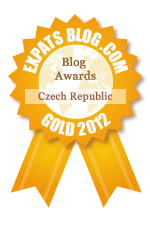 Pretoria is the administrative capital of South Africa. It was founded in 1855 and achieved city status in 1931. Today it is home to 742,000 people and there over 2,9 million people in the greater metro area.
Pretoria is the administrative capital of South Africa. It was founded in 1855 and achieved city status in 1931. Today it is home to 742,000 people and there over 2,9 million people in the greater metro area. Pretoria makes up the central part of the Tshwane Metropolitan Municipality. While there have been proposals to change the city's name to Tshwane, it is doubtful that this will happen.
Pretoria makes up the central part of the Tshwane Metropolitan Municipality. While there have been proposals to change the city's name to Tshwane, it is doubtful that this will happen. Pretoria is about a 55 km (34 miles) northeast of Johannesburg.
Pretoria is about a 55 km (34 miles) northeast of Johannesburg.As the country's administrative capital, this is where country's place their embassies. With three universities it is also a popular student city.
 Just south of the city is the Voortrekker Monument.
Just south of the city is the Voortrekker Monument. It commemorates the Boers who, due to grievances with the British Colonial Administration, migrated east from the Cape Colony between 1835 and 1854.
 The migration is known as the Great Trek.
The migration is known as the Great Trek.The granite monument is 40 metres (130 feet) by 40 metres by 40 metres. Construction began in 1937 and it was completed in 1949.

Pretoria is named after Andries Pretorius who was one of the Voortrekker leaders. There is a statue of him in front of the city hall.
 Kruger House is a museum that was once the residence of Paul Kruger, the Boer leader and President of the South African Republic (the Transvaal Republic). The house was built in 1884. This house was one of the first in Pretoria to have electricity. Apparently, milk had to be used, instead of water, to mix the cement used because the cement available at the time was of such poor quality.
Kruger House is a museum that was once the residence of Paul Kruger, the Boer leader and President of the South African Republic (the Transvaal Republic). The house was built in 1884. This house was one of the first in Pretoria to have electricity. Apparently, milk had to be used, instead of water, to mix the cement used because the cement available at the time was of such poor quality.
Across the street from Kruger House is the Reformed Church. It was opened by Kruger in 1897. The church was declared a national monument in 1979.
Church Square, formerly Market Square, is in the historic city centre. It's name comes from the church buildings that used to stand in the centre of the square from 1856 to 1905. In the centre of the square is a statue of Paul Kruger.
Historical buildings around the square include the Palace of Justice the Old Capital Theatre, the Old Council Chamber, and the General Post Office.

There is significant construction work going on now. Something tells me that the construction work will go on for years.

The Union Buildings, completed in 1913, are the official seat of the government and houses the President of South Africa.
 The Union Buildings and the adjoining garden are on the highest point of the city.
The Union Buildings and the adjoining garden are on the highest point of the city.In 2013, a 9 metre (~30 feet) tall bronze statue of Nelson Mandela was unveiled in front of the Union Buildings.





























No comments:
Post a Comment